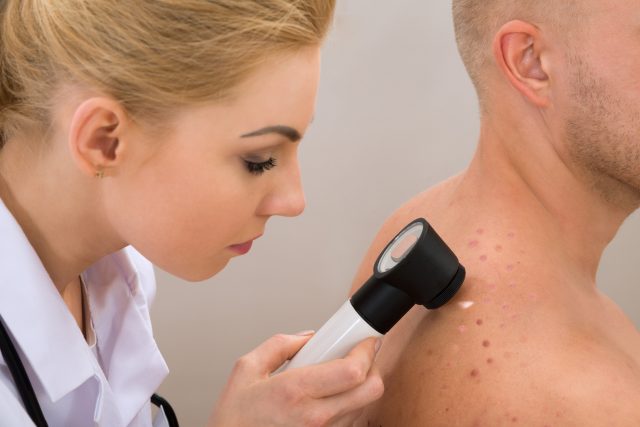 Melanoma is the most dangerous kind of skin cancer, and it takes the lives of more than 9,000 Americans each year. It’s highly treatable when it’s caught in its early stages, but oftentimes the signs are subtle and hard to spot, leading to late-stage diagnoses when the cancer has already spread elsewhere. Scientists are now developing a new “compact laser probe” tool that can differentiate between benign and malignant moles in mere seconds.
Melanoma is the most dangerous kind of skin cancer, and it takes the lives of more than 9,000 Americans each year. It’s highly treatable when it’s caught in its early stages, but oftentimes the signs are subtle and hard to spot, leading to late-stage diagnoses when the cancer has already spread elsewhere. Scientists are now developing a new “compact laser probe” tool that can differentiate between benign and malignant moles in mere seconds.
Daniel Louie is the researcher who designed the device as a Ph.D. student in biomedical engineering at the University of British Columbia. “With skin cancer,” he said, “there’s a saying that if you can spot it you can stop it — and that’s exactly what this probe is designed to do. The team designed the device to be inexpensive so that it can be easily manufactured and widely available for clinical use.
 The tool relies on the idea that light waves change when they pass through objects. After directing a laser towards the skin tissue of several volunteer participants, the researchers could study the changes occurring in the light beam. According to Louie, “Because cancer cells are denser, larger, and more irregularly shaped than normal cells, they cause distinctive scattering in the light waves as they pass through.”
The tool relies on the idea that light waves change when they pass through objects. After directing a laser towards the skin tissue of several volunteer participants, the researchers could study the changes occurring in the light beam. According to Louie, “Because cancer cells are denser, larger, and more irregularly shaped than normal cells, they cause distinctive scattering in the light waves as they pass through.”
Thus, the team was able to come up with an innovative method to instantly detect the presence of cancerous cells. Although other devices to help detect cancer exist, this probe is unique because it is affordable and accessible. It doesn’t need complicated lenses or cameras, and its results are in simple numerical form.
The tool is expected to cost only a few hundred dollars, but that doesn’t mean it will be available for public use. Tim Lee, associate professor of skin science and dermatology at UBC said that anything used in detecting cancer should only be administered by a licensed healthcare. This is so that results can be properly interpreted and the patient can receive advice about next steps.
This tool will not replace traditional cancer screening methods like self skin checks and annual dermatology appointments, but it will complement these screenings and offer another way of preventing late-stage melanoma diagnoses.
 The number of melanoma diagnoses are increasing, and there aren’t enough dermatologists to keep up with these cases. As Lee said, the tool is designed to be affordably and easily incorporated into the health care system to alleviate some of the pressure placed on health professionals. Lee believes this simple tool could save “hundreds if not thousands of lives.”
The number of melanoma diagnoses are increasing, and there aren’t enough dermatologists to keep up with these cases. As Lee said, the tool is designed to be affordably and easily incorporated into the health care system to alleviate some of the pressure placed on health professionals. Lee believes this simple tool could save “hundreds if not thousands of lives.”




























